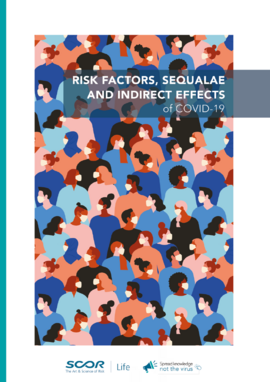COVID-19 Risk factors, sequalae and indirect effects
In this publication, SCOR provides an overview of the latest medical studies to keep in mind when adapting medical underwriting to our COVID-19 environment.
December 15, 2020

At SCOR we continuously examine the latest research and integrate what we learn from it into our solutions. The objective of this publication focused on COVID-19 risk factors is to provide an overview of the latest medical studies to keep in mind when adapting medical underwriting to our COVID-19 environment. It brings together the key points, information and knowledge developed so far on potential risk factors linked to COVID-19 infections, severe forms and consequences.
As the number of confirmed cases and deaths from COVID-19 (Coronavirus 2019/ SARS-CoV-2) continues to rise, clinicians and pathologists are gradually improving their understanding of the damage it can potentially wreak on the human body. Since the early days of its identification as a novel virus, it has been clear that the infection starts in the lungs, however its reach can extend to many other organs, including the heart and blood vessels, kidneys, gut, and brain.
What we do know is that, of those who become infected and show symptoms, some will require hospitalization and some will develop a “critical” illness that is often fatal. The figures involved are more complex than they seem: certain factors, such as pre-existing conditions linked to lifestyle or genetics, can have an impact on the chances of developing severe forms of the disease.
While COVID-19 is undoubtedly having a strong impact on our lives, it is also having a strong impact on the way we do business. This is particularly true in terms of medical underwriting and how we, as an industry, should adapt our operations, update our guidelines, and protect the lives of our policyholders as best we can.
